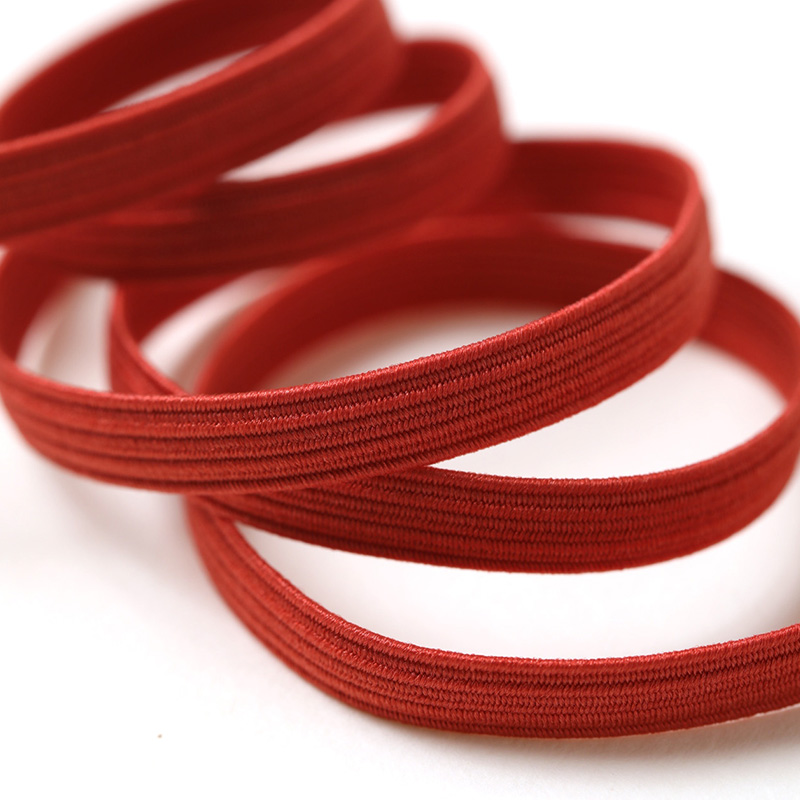Industry
 By Admin
By Admin
A Guide To Choosing The Right Knitted Elastic For Garment Projects
When working on any garment project, choosing the right type of elastic can make a noticeable difference in comfort, appearance, and durability. While fabric choice often gets more attention, the elastic hidden inside waistbands, cuffs, or straps plays an equally important role. Among the different types available, the knit elastic band offers versatility and softness, making it a popular choice for a variety of apparel applications. Understanding the differences between elastic types—such as the knit elastic band, braided elastic band, and thin elastic band—can help you select the ideal match for your project's needs.

The knit elastic band is known for its ability to retain its width when stretched, which is especially useful for garments that require consistent shaping. Its construction uses interlocked fibers that allow the band to expand and contract smoothly without rolling or losing form. This makes it ideal for waistbands in skirts, pants, and casual wear. Compared to the braided elastic band, which narrows when pulled, the knit elastic band tends to provide a more uniform fit. It is also comfortable against the skin, which is important for clothing designed to be worn for long periods.
On the other hand, the braided elastic band has its own unique characteristics. It features lengthwise ribs that make it firmer and more durable under high tension. However, because it tends to contract in width when stretched, it is often better suited for casings rather than direct stitching. Many sewists choose it for projects like sleeves, swimwear, and adjustable straps. In some cases, combining a braided elastic band with a knit elastic band within the same garment can create a balance between flexibility and firmness.
Another option to consider is the thin elastic band, which is typically lightweight and narrow. The thin elastic band works well for delicate applications such as lingerie, face masks, or gathering small sections of fabric. It provides enough stretch to hold materials in place without adding bulk, making it ideal for lightweight fabrics. While the thin elastic band might not be the right choice for heavy waistbands, it can be combined with other types—such as inserting it alongside a knit elastic band—to add subtle shaping in specific areas of a garment.
When choosing the right elastic for your project, think about how the garment will be worn and washed. A knit elastic band generally performs well in machine washing without losing its stretch quickly, but like all elastic, it should be kept away from excessive heat. If you need a waistband that remains soft and flexible even after multiple wears, the knit elastic band is a solid option. If you need stronger tension, a braided elastic band may be the better choice for that specific part of the garment. For small details or lightweight fabrics, the thin elastic band provides a subtle and effective solution.
Sewing techniques also influence how elastic behaves in the finished product. A knit elastic band can be stitched directly onto fabric without worrying about it losing shape, which is not always the case with a braided elastic band. The thin elastic band, because of its narrow profile, often needs careful handling to prevent stretching out during sewing. Matching your sewing method to the elastic type helps ensure that the finished garment has the right balance of stretch and structure.
Design aesthetics should not be overlooked either. A knit elastic band can come in different widths, colors, and textures, making it possible to use it as a visible design element rather than simply a hidden component. The braided elastic band, while more functional in appearance, can also be dyed or covered to match fabric colors. The thin elastic band, though less noticeable, plays a quiet but important role in shaping garments without interfering with the overall look.
Ultimately, the right choice comes from understanding the function each type of elastic serves. For a versatile and consistently shaped stretch, the knit elastic band often works well in many garment projects. For a firm hold and durability, the braided elastic band can be the answer. For light, discreet stretches, the thin elastic band excels. By matching the type of elastic to the garment's design and purpose, you can achieve a comfortable fit and reliable performance for the wearer.



 English
English Español
Español عربى
عربى Tiếng Việt
Tiếng Việt

